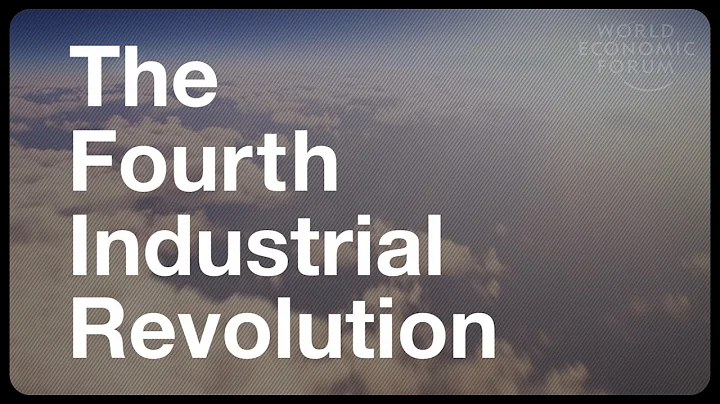

is coerced by big data, cloud computing , artificial intelligence and other digital technologies . The wave of the fourth industrial revolution is accelerating, and the global economy has reached a crossroads in history. Those who ride on the technology wave of the
website are growing vigorously, while those who miss the technology wave will retreat sadly. How should ordinary Chinese manufacturing companies seize the opportunity to leap towards China's intelligent manufacturing?
learn from history. Sixty years ago, in the early days of informatization, the top four airlines in the United States successively purchased the Saber airline reservation system developed by IBM. However, the chairman of People Express Airlines, which ranked fifth, believed that the IT system was irrelevant. Later, the company fell into huge losses and was acquired by Continental Airlines.
However, even if they are equipped with information software, some US airlines only use it in a rigid manner and have not integrated technology into their corporate DNA. Take Pan American Airways as an example. In 1962, it introduced the "PANAMAC" system developed by IBM before its peers, but in the end it could not escape the fate of decline due to poor management.
In sharp contrast, in the 1980s and 1990s, when the concept of digital transformation was just emerging, manufacturing giant Siemens formulated a strategy of "electrification, informatization, and digitization". Today, after being tempered by the market, Siemens has transformed into a digital technology company, relying on its cloud operating system to output digital solutions to customers.
Looking back at the essence of the fourth industrial revolution, the higher stage of digital transformation lies in industrial intelligence.
Industry intelligence leader Tesla took the lead in self-developed Warp system, which can directly help finance, sales, purchasing, CRM and other departments respond to consumer needs as quickly as possible. In addition, on the production side, almost all the production processes of Tesla products are completed by intelligent robots. Tesla, which has completed its intelligentization, is already far ahead of traditional car companies from the beginning.
An Xiaopeng, deputy director of of Alibaba Research Institute, believes that digital transformation is not about arming technology to the teeth, but integrating digital technology into the DNA of the enterprise and starting a never-ending journey of capability evolution.
In fact, such a huge digital change is quietly taking place in the vast corners of China's cities. In Zhaoqing , a third-tier city in the Pearl River Delta, Fenghua New Energy, a battery manufacturer with relatively backward management and production, relied on the low-code platforms of Alibaba Cloud and DingTalk to successfully build a battery with only 7 people. The integrated digital solution from product, quality, process, R&D to supply chain and sales has even changed the direction of battery process manufacturing and international trade.
This is just a microcosm of the wave of digital transformation in China.
In 2022, "low code" is causing a storm among Chinese entities.
Ordinary Chinese entities are switching to a high-speed digital economic track by seizing "low code". This is becoming a tool and weapon for Chinese entities to participate in global division of labor and competition.
1. The magic of low-code "gene editing"
The person in charge of the information management project of the Western Airport Group may have never imagined that DingTalk + low-code could help solve business management problems that have plagued it for many years.
Western Airport is the second largest inter-provincial airport management group in the country. It has jurisdiction over 25 airports in the four provinces (regions) of Shaanxi, Gansu, Ningxia and Qinghai, involving aviation logistics, road transportation, real estate and other subdivisions, and has There are 20 secondary subsidiaries.
However, for a long time, Western Airport has been facing many problems such as high collaboration costs, low efficiency of cross-company and departmental communication due to its large business territory and large number of member units.
In order to solve the problem, Western Airport has already purchased multiple information systems from relevant software manufacturers. However, in actual practice, these systems are incompatible, slow to respond, and extremely costly to maintain. They are like isolated "chimneys" erected within the group.
In 2018, driven by the need for digital transformation, Western Airports moved the group's infrastructure to Alibaba Cloud, gradually integrating multiple fields such as passenger travel, employee services, and corporate management based on the middle-end architecture.
In 2021, Western Airports will attack again, moving 25 of its airports to exclusive DingTalk, officially starting the low-code journey.

Western Airport DingTalk workbench interface
According to a research report by CICC, low-code refers to a development method that can quickly generate applications without or requiring only a small amount of code, and can be quickly configured and deployed. For physical enterprises, low-code can break through the data barriers of various departments and achieve data interconnection, which is of great significance to the digital transformation of enterprises. The above-mentioned person in charge of
was deeply touched by this. He excitedly introduced that in September last year, in order to support the smooth holding of the 14th National Games and Paralympics, the Western Airport served as an "air portal" and the pressure for epidemic prevention doubled. However, relying on DingTalk's low-code platform, the group quickly built an epidemic prevention and control management module, which can directly grasp important information such as the number of close contacts, isolation status, and flights involved.

In addition, in the minds of front-line airport employees, the low-code development application on DingTalk has become the most convenient digital tool. According to statistics, as of now, the front-line digital demand of Western Airport Group has nearly doubled year-on-year, and most of it comes from actual business scenarios such as airport security inspection and terminal management.
Actually, it’s not just the airline industry. More than 1,600 kilometers away from the West Airport Group in Taizhou City, Zhejiang Province, Weixing Industrial Development Co., Ltd. (hereinafter referred to as "Weixing Industrial") has also experienced the convenience brought by low-code technology.
Weixing Industrial is the first listed company in the domestic button and zipper industry. It has five major industrial bases in Zhejiang, Shanghai, and Shenzhen, with an annual production of nearly 10 billion mid- to high-end buttons of various types and more than 300 million meters of zippers. However, digital transformation has It has always been a gap that is difficult to bridge.
Many production points in Weixing Industrial's factories require regular inspections, but the hardware equipment purchased in the past cannot save data and can only know the location of the inspector. Moreover, these equipment are extremely expensive and very "delicate".
After accessing DingTalk, Weixing Industrial found a new model for digital transformation. It posted QR codes on production points. When inspectors pass by, they only need to scan the QR codes to understand the point information. If there are any problems, you can directly record them on the system, which makes the work at each point traceable.
At the same time, Weixing Industrial also built its own paperless dormitory repair application based on DingTalk's low-code tool Yidai, making the entire repair process transparent and smooth.
Returning to the industry perspective, over the years, in people’s minds, most Chinese companies do not have the DNA of digital technology, and their digital construction faces three major problems: lack of funds, lack of talents, and lack of technology. The most direct case of is that even aviation giants like Western Airports, which are not short of money, talent, and technology, are in trouble during the transformation.
In this regard, An Xiaopeng believes that "enterprise competitiveness with digitalization as the core cannot be bought simply by spending money. But now, cloud computing platform + low code is helping enterprises to accumulate their own knowhow, encapsulate professional knowledge, and cultivate Data thinking creates conditions for forming unique competitive advantages.”
According to this, Cloud Ding Integration and Ding Ding + Low Code are undergoing a “genetic transformation project”, which on the one hand helps Chinese entities abandon the original and backward stereotype . , on the other hand, activate their digital technology genes to the maximum extent and cultivate the ability to continue iterative evolution and innovation.
2. How can digitalization benefit everyone?
One flower blooming alone is not spring, but a hundred flowers blooming together fill the garden. So, how can digital technologies such as cloud computing achieve true digital inclusion, and how can they break the "involution" of the industry?
Last July, these two questions finally had answers. Ye Jun (nickname: Buqiu), President of DingTalk, said, “The real inclusiveness is to allow the upstream and downstream in this industry, large enterprises and their surrounding supply chain enterprises to move forward together on the digital track. ”
That is indeed the case. Today, when division of labor and collaboration have become highly mature and professional, no matter which link in the middle has a problem, the global competitiveness of the entire industry chain will decline sharply.
DingTalk is well aware of the importance of low-code platforms for the realization of technology and the inclusiveness of technology. According to public information, in May last year, DingTalk launched a low-code development aggregation platform - "DingTalk" low-code application plaza - at the Alibaba Cloud Developer Conference. In October last year, " DingTalk + " joined forces with eight mainstream low-code manufacturers to jointly announce the establishment of the industry's first low-code alliance.

Fenghua New Energy and its upstream and downstream suppliers are the beneficiaries of DingTalk’s low-code platform. Its CIO Luo Xunheng told the author that there are only seven people in their information department, but by affixing DingTalk QR codes on all equipment and materials such as mixers and barreled electrolytes, they have successfully directly improved the efficiency of shipments to downstream mobile phone manufacturers. 5 times.
In addition, these seven people have also developed an integrated supply chain solution for upstream and downstream collaboration including material online, inventory data, automatic price comparison and order placement by suppliers, which not only promotes the reduction of this segmented battery industry chain. This efficiency increase has also helped various companies improve their position in the global trade pattern.
Compared with the lithium battery industry chain, the clothing industry chain focuses on the matching of inventory and production. It has extremely high requirements for efficient collaboration between front-end operating data and back-end raw materials and production links.
Therefore, after , Xtep and joined hands with DingTalk in 2016, they first built their own mobile office platform based on low code internally, and connected various business systems to realize the interconnection of business data. It is reported that this set of "combination punches" has increased Xtep's overall operating efficiency by 20%, and reduced various costs such as paper and manpower by 10%. After

, Xtep, with the help of DingTalk, connected more than 200 upstream and downstream suppliers to the DingTalk platform. Now on DingTalk, Xtep has opened up permissions to corresponding upstream suppliers. They can directly download process packages and contracts, and these materials themselves are also watermarked, which not only reduces communication costs but also avoids information security risks. The entire supply chain Collaboration efficiency increased by 15%.
Oriental Hope Group is a leader in promoting the digitalization of the industrial chain in many fields. So far, based on DingTalk's low-code platform, Oriental Hope has launched 67 digital micro-applications on its own APP, Dongdong, covering ten major professional fields such as farming and energy.
is like ribbon management. This application can set upper and lower limits according to data standards and manage different colors. When there is an abnormality in the data, the system will automatically alarm. It is reported that the ribbon management application is also suitable for industrial chains such as electricity, photovoltaics, and pig farming.
Not only that, Oriental Hope has also upgraded its digital department to the group's science and innovation sector. It hopes to use DingTalk as its technology base to export SaaS businesses or digital solutions to drive upstream and downstream customers to work together on digital transformation.
Obviously, technology is moving towards reality, and DingTalk is building a new digital inclusive ecosystem based on cloud computing platform + low-code tools. In the entire ecosystem, Alibaba Cloud and DingTalk are the digital base, providing basic technology and service support for physical enterprises in all walks of life, and low-code is a personalized digital transformation tool for enterprises.
This is also a market for win-win cooperation. DingTalk hopes to join hands with ecological partners to jointly explore a new path for digital transformation that is low-cost, personalized, and scalable for Chinese entities to promote "Intelligent Manufacturing in China" The rise of.
3. The spiral effect of “Cloud + Ding + Low Code”
Why will the integration of Cloud and Ding and DingTalk + Low Code become the unanimous choice for the digital transformation of many Chinese entities?
first looks at the demand side. In the past decade or so, digital transformation has become a consensus in all walks of life. However, because most companies lack technology development capabilities, they mainly purchase information systems from software vendors, such as CRM, ERP, etc.
It is undeniable that these software systems did solve many problems in the early stage, but from the perspective of technical architecture, they basically adopted a siled development model. The underlying system was difficult to modify and the integration was confusing. There are serious data barriers to software.
BCG Consulting has pointed out in many articles that in the digital environment, if enterprises want to improve their agility or transform into digital native enterprises, they must build cloud computing as the base and have the characteristics of distribution, platformization, modularization, etc. A new generation of information technology architecture.

Let’s look at the supply side. Compared with its peers, Alibaba has successfully built the full-link technology and service capabilities of "Alibaba Cloud IaaS + DingTalk PaaS + SaaS", deciphering various genetic codes of enterprise digitalization, and providing support tailored to enterprise conditions. In addition, DingTalk has truly achieved "dirt on its legs" and complemented and integrated with the real industry.
It should be pointed out that Alibaba Cloud and DingTalk can achieve close integration in terms of technology and services. The digital system built on Alibaba Cloud and DingTalk can completely break through the business and data barriers of enterprises.
such as fashion brand men's clothing enterprise carbine clothing. After accessing DingTalk, the company adopted a "four-wheel drive" model, using "business mid-end + data mid-end" as the middle drive, using mini-programs to reach consumers, and DingTalk to drive supply chain collaboration. Specifically,
started with data warehouse management and stored more than 300 labels and 1,000 indicators in the "data lake" for people and goods. Business departments can get the data they want at any time through the "data lake". Based on the data middle platform, Cabin’s business data analysis speed has increased by 24 times. In building the business middle platform of
, Kabin reshaped the entire business chain process based on the underlying architecture of Alibaba Cloud, and successfully integrated digital technology throughout the upstream, middle and downstream of the industrial chain.
The capital market has the most sensitive sense of smell. In 2020, even in the face of the impact of the new crown epidemic, Carbine's share price in the Hong Kong stock market still nearly tripled.
If the integration of Cloud and DingTalk is compared to the base and engine of a car, then DingTalk + low code is a booster.
In people's traditional cognitive system, developing applications is the job of programmers, and only they can do it. But the reality is that the information department belongs to the middle and back-end of the enterprise, and programmers' understanding of needs is different from that of front-end business personnel.
A person from the enterprise information department once told the author that often the information department has completed the software, but the business staff are not satisfied. After the information department revised it again, the requirements at that time were no longer applicable to the current situation, and many projects were shelved. The birth of
DingTalk + low code has given frontline business personnel the ability to develop software. As mentioned earlier, Fenghua New Energy has only seven people in its information department, and only one liberal arts student knows a little bit about coding. The remaining six people are all monks halfway.

The digital R&D team of Liuzhou Iron and Steel Group's cold rolling mill is developing the application
through low-code on DingTalk. Another example is the cold rolling mill of Liuzhou Iron and Steel Group. Peng Qiwen, an automation room worker, relied on DingTalk's low-code platform to complete the application in just half an hour. An nucleic acid detection registration system has been developed. With the support of this system, it took more than 7,000 employees in the factory only about 3 hours to complete the code scanning, and the two nucleic acid tests for all employees only took 8 hours.
In summary, Alibaba Cloud IaaS + DingTalk PaaS + SaaS have formed a spiral effect.
Alibaba Cloud IaaS is a solid technical foundation. The PaaS platform formed by DingTalk + low code provides a new digital transformation model for real enterprises. As more and more companies embrace Cloud-Dingling integration and DingTalk + low-code, changing the way software is developed, the SaaS software they develop will greatly enrich this digital ecosystem.
As Zhang Jianfeng, president of Alibaba Cloud Smart said, Alibaba Cloud + DingTalk + low code are making progress happen.
4. The eve of the rise of China's digital economy
Currently, the COVID-19 epidemic continues to affect the recovery and growth of the global economy. Against the background of this evolving power structure, the development of the digital economy and digital industry may become the key "winner".
It is worth noting that although some industries in China are already at the forefront of the world in digital transformation, according to data released by CICC, the current global penetration rate of low-code and is 33%, while China is only 5%. The low-code/no-code market size in 2020 is approximately 1.9 billion yuan.
However, CICC also pointed out in the research report that low-code will usher in unprecedented opportunities. It is expected that the compound growth rate of the Chinese market will reach 49.5% in the next five years, and by 2024, the market size will reach tens of billions of yuan. .
In fact, this development trend has been faintly revealed. According to the author's observation, up to now, there are Fenghua New Energy, Risheng , JA Solar, etc. in the new energy industry, Xtep, Cabin, etc. in the clothing retail industry, Laoxiangji , etc. in the catering industry, and Western Airport in the transportation industry. Groups and other large, medium and small enterprises are accelerating to embrace the new digital ecosystem of Alibaba Cloud + DingTalk + low code.
On the other side, the smartest investment institutions have also smelled the opportunities brought by the low-code industry storm. Public information shows that in recent years, SaaS companies in the DingTalk ecosystem have continued to raise funds.
In August 2020, Houshuabao completed a Series A financing of 20 million yuan. In November, the low-code platform Tritium Cloud (Aozhe) received 200 million yuan in Series B+ financing. In June 2021, Xinrenxinshi completed a Series B financing of 50 million yuan. In September, No. 1 Zhipin completed Series A financing. In December, Yi Xieyun completed the A round of financing...
In this regard, Qiming Venture Partners Ye Guantai believes that the turning point in the SaaS industry has arrived, "the entire SaaS ecosystem will usher in fundamental changes." "
Obviously, DingTalk + low code is changing the investment ideas of Chinese venture capital institutions, and these venture capital institutions are also following DingTalk to "nugget gold" in the industry wave. How does
view the future development of this trend?
At present, the new digital ecosystem of Alibaba Cloud + DingTalk + low-code is still in the early stages of development, but the joining of every physical enterprise is like lighting up a flame in this industry.
In the future, when sparks continue to spread, the vast land of China will be ignited with a blazing flame of industrial digitalization.
Thousands of sails are competing, riding the wind and waves. By then, all walks of life in China will officially enter the digital era, and world-class giants will emerge in China's corporate jungle.






















![Unbelievable Cosmic Phenomena Beyond Our Galaxy | Secrets Of The Universe [All Episodes] | Spark - DayDayNews](https://i.ytimg.com/vi/sHEwTKEDVM0/hq720.jpg?sqp=-oaymwEcCNAFEJQDSFXyq4qpAw4IARUAAIhCGAFwAcABBg==&rs=AOn4CLAOHCCVwEK0S3PEAiMgW9rL4mC6YQ)